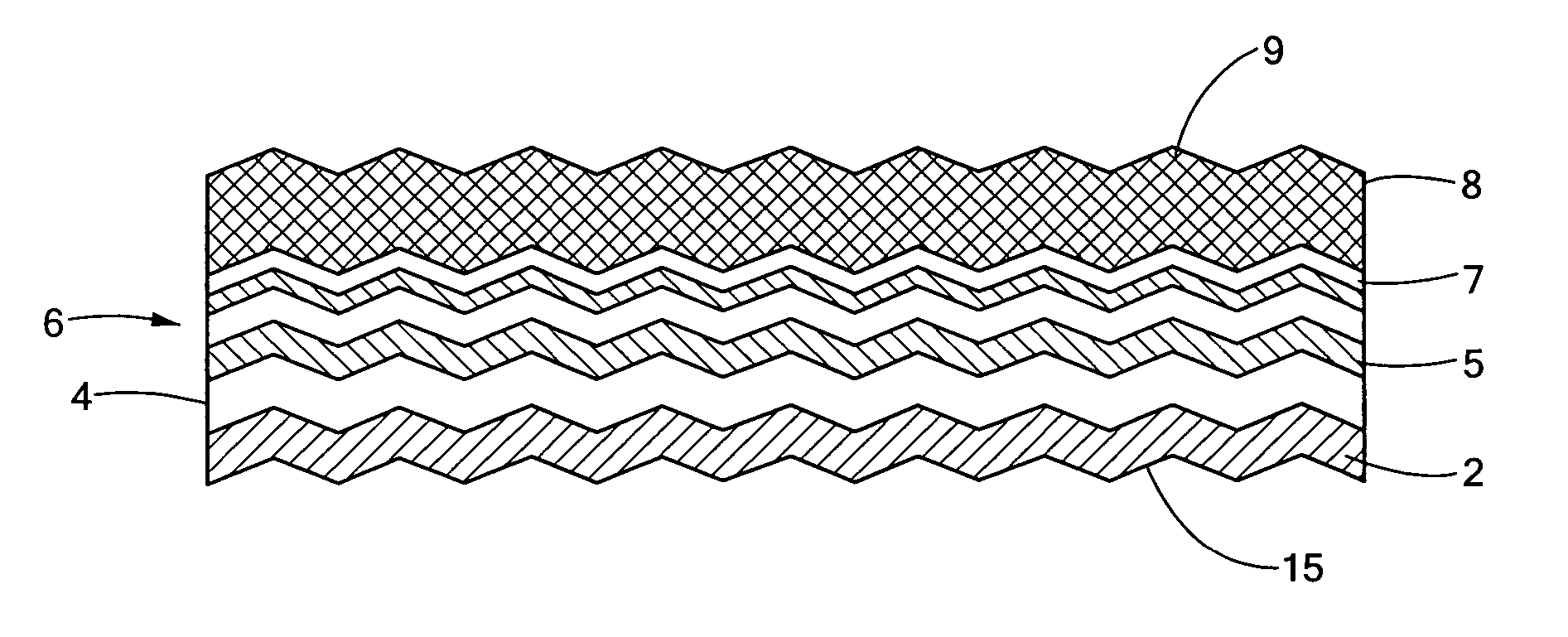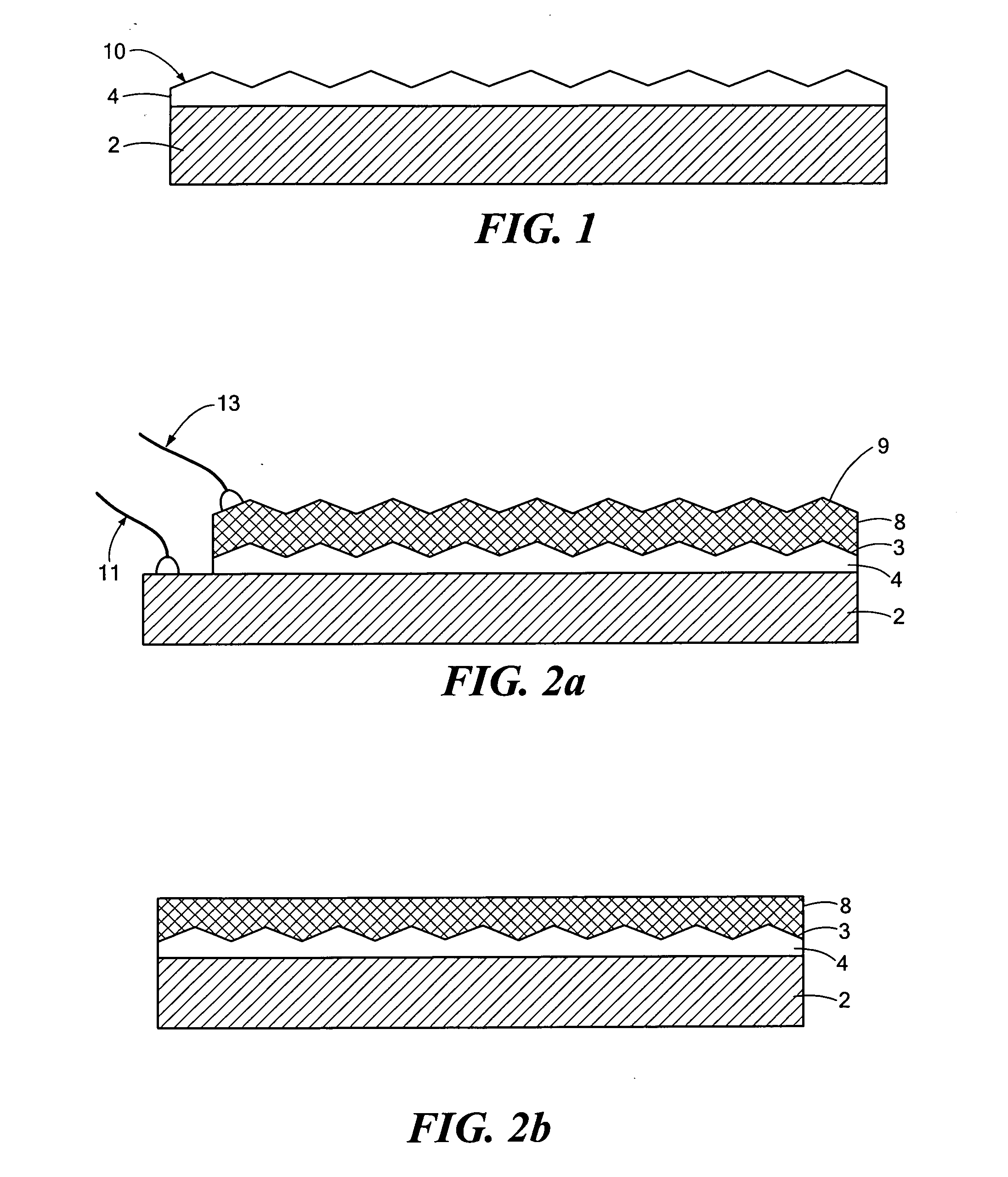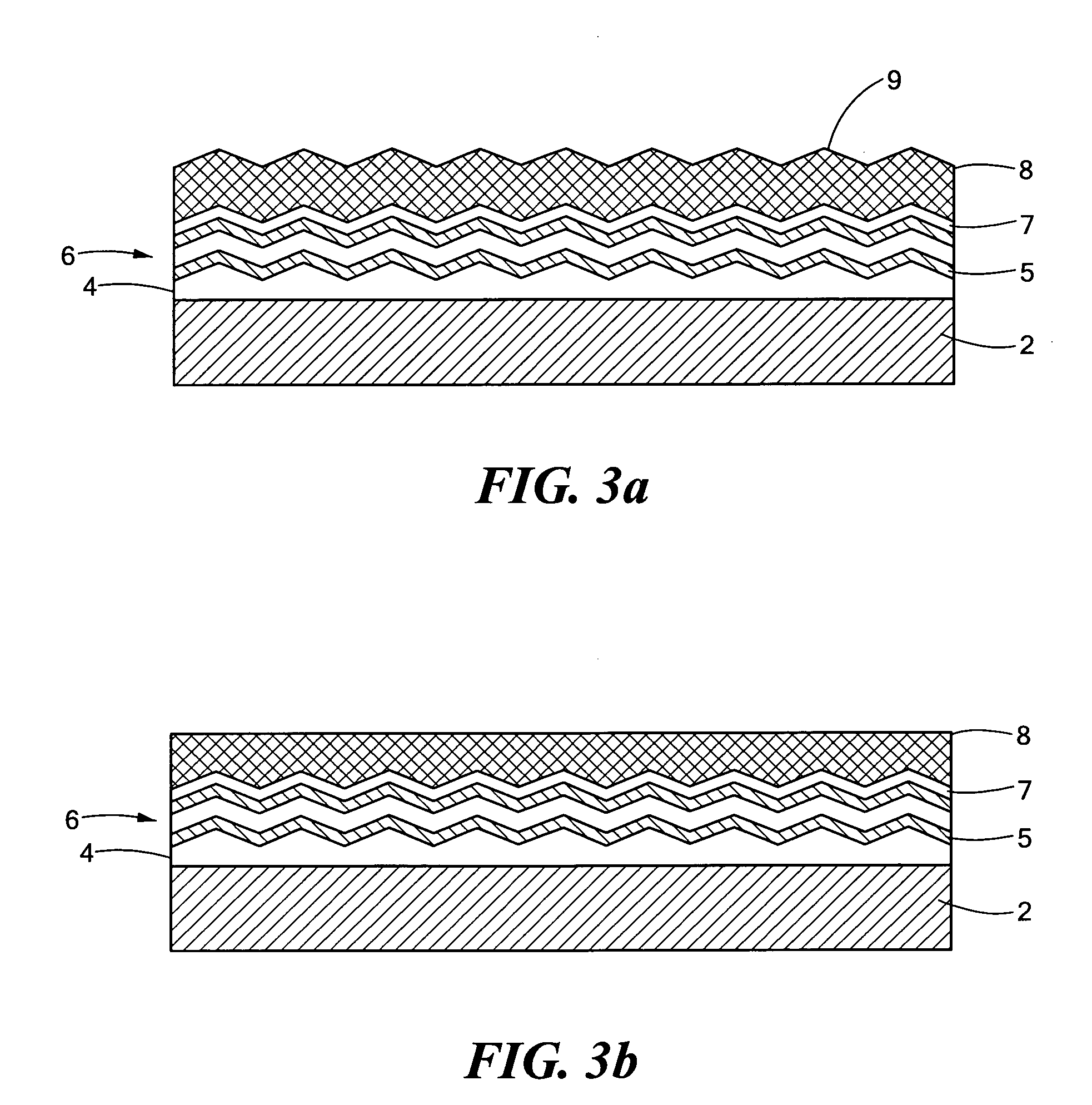Optical devices featuring textured semiconductor layers
a technology of optical devices and semiconductor layers, applied in the direction of semiconductor devices, electrical devices, nanotechnology, etc., can solve the problems of reduced internal efficiency and achieve the effects of enhancing light escape, improving light extraction efficiency, and improving the efficiency of coupling light into the devi
- Summary
- Abstract
- Description
- Claims
- Application Information
AI Technical Summary
Benefits of technology
Problems solved by technology
Method used
Image
Examples
example i
[0054] A textured GaN template according to the invention is grown by the modified HVPE process described above. The GaN template is grown via a modified HVPE reactor. In the reactor, a group III precursor is GaCl gas, which can be synthesized upstream by flowing HCl on a quartz-boat containing Ga at temperatures from about 500° C. to 1000° C. GaCl gas then mixes with ammonia (NH3) downstream near the surface of the substrate wafer to form GaN at temperatures between about 900° C. to 1200° C. A GaN or AlN or AlGaN template of the invention can be grown along polar and non-polar directions. The templates can also grow in their cubic structure by choosing a substrate having cubic symmetry such as for example (100)Si (001)GaAs. In this case the subsequent nitride layers grown on it will have cubic symmetry as well.
[0055] The modified reactor is generally divided into four zones in which each zone temperature can be individually controlled. The reactor also has three separate delivery ...
example ii
[0062] Example II involves the growth of multiple (wrinkled) quantum wells on a textured template of the invention. The quantum wells comprise ten pairs of AlGaN and GaN layers. An individual GaN layer may comprise a textured quantum well layer with the AlGaN layer serving as the barrier layer. The composition of the AlGaN layer, for example, is Al0.2Ga0.8N. Generally, that is AlxGa1-xN. The multiple quantum wells can also be made by any combination of small gap III-V nitride films (wells) and large gap III-V nitride films (barriers). The composition of the MQW determines the emission energy of light from about 0.7 eV of pure InN to 6 eV from pure AlN. The plurality of quantum well layers are grown by any suitable deposition process. A MBE process involves the reaction of a group III material with nitrogen that has been activated by radio frequency or microwave plasma. An alternative approach would be to react group III materials with ammonia on a heated substrate.
[0063] The group ...
example iii
[0069] A highly conductive magnesium-doped p-type GaN layer with a hole concentration of about 1018 cm−3 and a thickness of about 0.5 micrometers was deposited by molecular beam epitaxy (MBE) on top of an n-type textured gallium nitride template according to the invention. The textured gallium nitride template had an electron concentration of about 1019 cm−3. The p-type GaN layer was formed using a radio frequency plasma source to activate molecular nitrogen and Knudsen effusion cells to evaporate the Ga and Mg. Growth occurred at extreme gallium rich conditions at which Mg was then incorporated at relatively high substrate temperatures of 700° C. to 800° C. Alternatively, the p-type layer could be grown using ammonia as the nitrogen source. A similar p-type layer could also have been grown by an MOCVD or HVPE process. FIG. 12 shows an electroluminescence spectrum of the p-n junction formed with the textured template under a current injunction of 80 mA.
PUM
 Login to View More
Login to View More Abstract
Description
Claims
Application Information
 Login to View More
Login to View More - R&D
- Intellectual Property
- Life Sciences
- Materials
- Tech Scout
- Unparalleled Data Quality
- Higher Quality Content
- 60% Fewer Hallucinations
Browse by: Latest US Patents, China's latest patents, Technical Efficacy Thesaurus, Application Domain, Technology Topic, Popular Technical Reports.
© 2025 PatSnap. All rights reserved.Legal|Privacy policy|Modern Slavery Act Transparency Statement|Sitemap|About US| Contact US: help@patsnap.com



